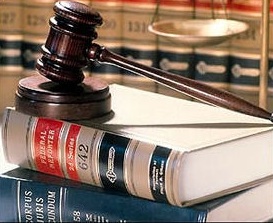 There are two sides of this nomination, but one point about the probably result seems important to many:
There are two sides of this nomination, but one point about the probably result seems important to many:
2. Kagan may well have less experience relevant to the work of being a justice than any justice in the last five decades or more. In addition to zero judicial experience, she hasonly a few years of real-world legal experience. Further, notwithstanding all her years in academia, she has only a scant record of legal scholarship. Kagan flunks her own“threshold” test of the minimal qualifications needed for a Supreme Court nominee.
3. There is a striking mismatch between the White House’s populist rhetoric about seeking a justice with a “keen understanding of how the law affects the daily lives of the American people” and the reality of the Kagan pick. Kagan is the consummate Obama insider, and her meteoric rise over the last 15 years–from obscure academic and Clinton White House staffer to Harvard law school dean to Supreme Court nominee–would seem to reflect what writer Christopher Caldwell describes as the “intermarriage of financial and executive branch elites [that] could only have happened in the Clinton years” and that has fostered the dominant financial-political oligarchy in America. In this regard, Kagan’s paid role as a Goldman Sachs adviser is the perfect marker of her status in the oligarchy–and of her unfathomable remoteness from ordinary Americans.
6. Kagan has argued that the Senate should carefully explore a nominee’s views on judicial philosophy generally and on hotly contested constitutional issues in particular. Her argument has special force for someone who has been so guarded about her own views. Indeed, its force is all the greater since Kagan has indulged her own ideological views in the one area, gay rights, in which she has been vocal: as law school dean,Kagan embraced an utterly implausible reading of the Solomon Amendment, and as Solicitor General, she has acted to undermine the Don’t Ask, Don’t Tell law and theDefense of Marriage Act that she is dutybound to defend.
And from the NYTimes, by Peter Baker and Jeff Zeleny …
Replacing Justice Stevens with Ms. Kagan presumably would not alter the broad ideological balance on the court, but her relative youth means that she could have an influence on the court for decades to come, underscoring the stakes involved.
In making his second nomination in as many years, Mr. Obama was not looking for a liberal firebrand as much as a persuasive leader who could attract the swing vote of Justice Anthony M. Kennedy and counter what the president sees as the rightward direction of the court under Chief Justice John G. Roberts Jr. Particularly since the Citizens United decision invalidating on free speech grounds the restrictions on corporate spending in elections, Mr. Obama has publicly criticized the court, even during his State of the Union address with justices in the audience.
Ms. Kagan defended her experience during confirmation hearings as solicitor general last year. “I bring up a lifetime of learning and study of the law, and particularly of the constitutional and administrative law issues that form the core of the court’s docket,” she testified. “I think I bring up some of the communications skills that has made me — I’m just going to say it — a famously excellent teacher.”
Ms. Kagan was also confirmed by the Senate just last year, albeit with 31 no votes, making it harder for Republicans who voted for her in 2009 to vote against her in 2010.
The president can also say he reached beyond the so-called “judicial monastery,” although picking a solicitor general and former Harvard law dean hardly reaches outside the Ivy League, East Coast legal elite. And her confirmation would allow Mr. Obama to build on his appointment of Justice Sotomayor by bringing the number of women on the court to its highest ever (three, with Justice Sotomayor and Justice Ruth Bader Ginsburg).
Moreover, in his selection of finalists, Mr. Obama effectively framed the choice so that he could seemingly take the middle road by picking Ms. Kagan, who correctly or not was viewed as ideologically between Judge Wood on the left and Judge Garland in the center.
But Mr. Obama ultimately opted to save Judge Garland for when he faces a more hostile Senate and needs a nominee with more Republican support. Democrats expect to lose seats in this fall’s election, so if another Supreme Court seat comes open next year and Mr. Obama has a substantially thinner margin in the Senate than he has today, Judge Garland would be an obvious choice.

